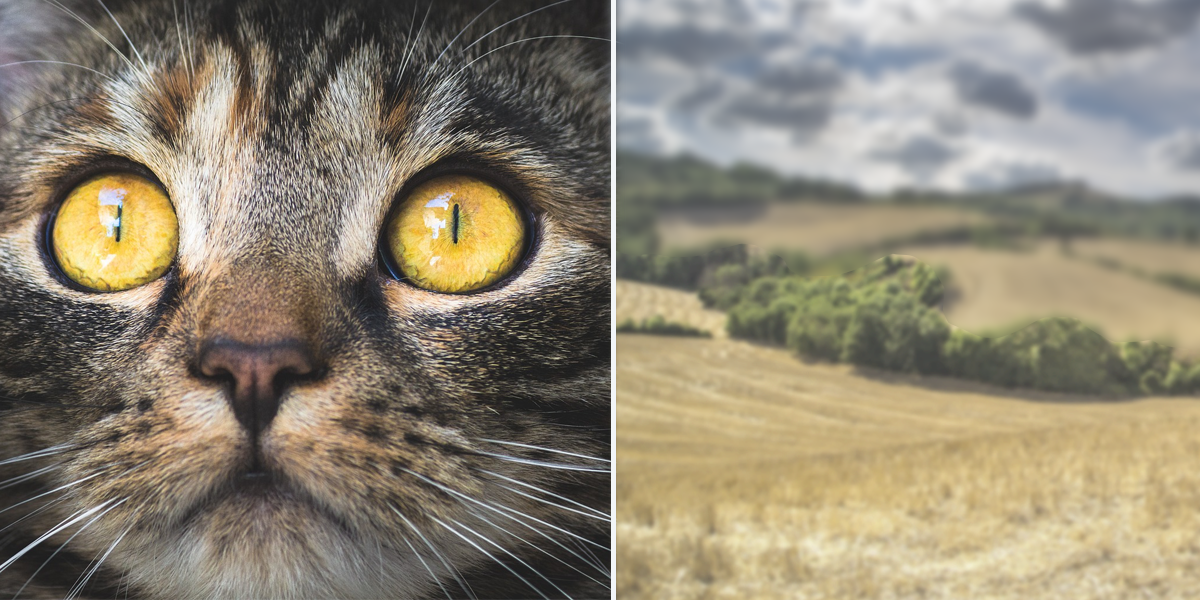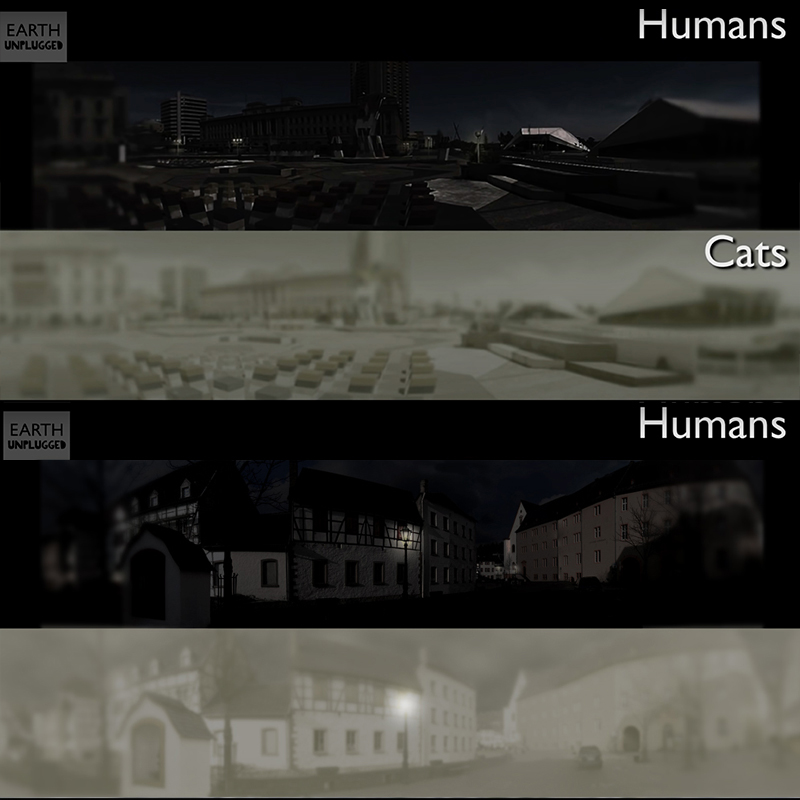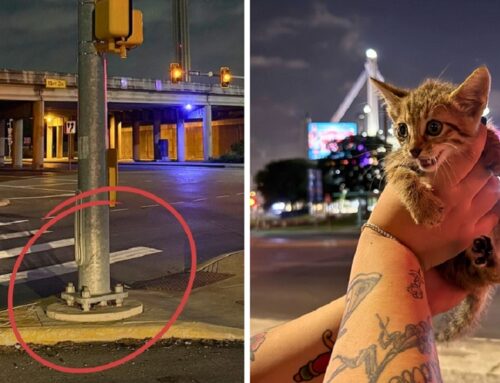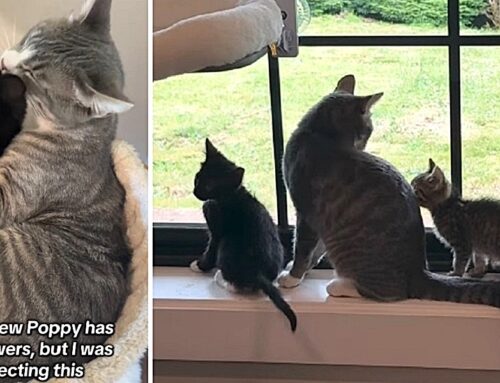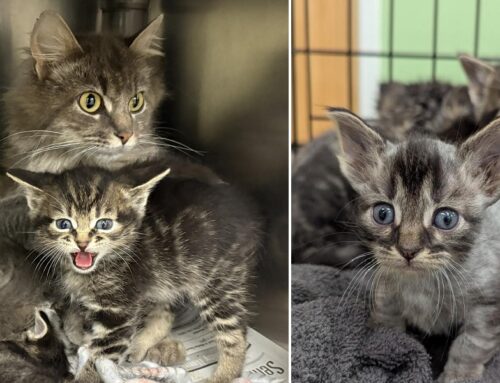As it turns out, a cat’s vision is like a muted and soft Instagram filter. There’s no need to apply a filter for a cat since they will always see you in a soft glowing light. Nice, right?
Cats see a world of soft sun-drenched colors like they all live in Tuscany or a movie filmed with a desaturated “intangible sludge” aesthetic, which is all the rage these days. Cats have always lived in a stylish but blurry Tim Burton world.

Images by Nickolay Lamm for MyDeals.com. Screenshots via YouTube/BBC
Night Vision Superpowers
Also, cats have much better peripheral vision than people. But as you might expect, their night vision is where they truly excel, putting us all to shame. They can see using “roughly one-sixth the amount light that people need,” according to Business Insider.
Lamm says they may see 6-8 times better in dim light due to three things:
- large cornea
- elliptical pupil
- tapetum
The tapetum is a structure behind the retina, which we don’t have, that acts like a mirror. This is why a cat’s eyes glow at night as the light bounces around and reflects light back through the retina. While this improves night vision, it also makes objects blurred.
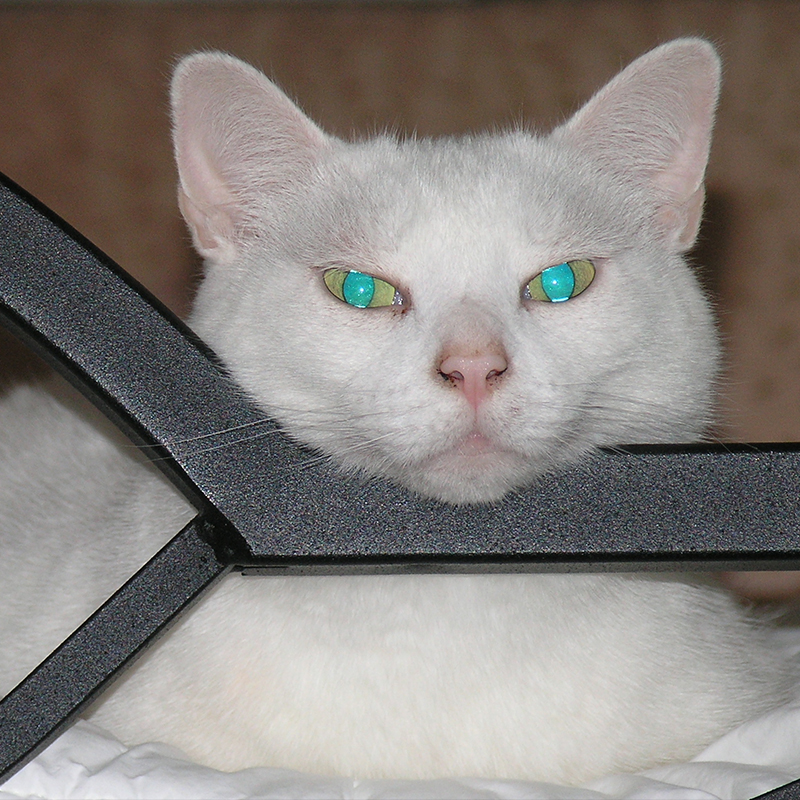
Reflection of camera flash from the tapetum lucidum via Wikipedia by Greg Hume, CC BY-SA 3.0.
Cat Vision Versus Human
By comparison, people live in a vivid and garish highly-detailed technicolor world. We’re not in Kansas anymore.
On the other hand, we have a couple of advantages over a cat. We can see objects much farther away and in much more detail, although birds of prey are far superior in this regard. Plus, we have a slight advantage in noticing objects moving very slowly (Although a cat may probably hear or feel their vibrations long before we would). Maybe, this explains why some cats can be frightened by the sudden appearance of motionless objects. Since they can’t see slow movement in detail as well, they may not be sure if that cucumber could be up to something. (Please don’t traumatize your cat with a cucumber!)
Below, we share more examples of how a cat sees the world by Nickolay Lamm in a project for MyDeals.com.
Seeing With a Cat’s Vision
Artist Nickolay Lamm consulted multiple experts on animal eyes to create images comparing a cat’s vision to a human’s. The BBC has widely shared his images and many other publications like Business Insider and Yahoo!
In the pictures below, you can see how a person views the world on top versus a cat below. The blurred edges represent the field of peripheral vision.
Eyes for Nighttime Hunting and Zoomies
Some notable differences in cat versus human vision. Most people and cats are thought to see a full spectrum of colors due to three types of cones in the retina at the back of the eye.
- Cats are probably trichromats like most humans (color vision), but due to having fewer overall cones and more rods, they see much more muted colors. Previously, scientists thought cats were dichromats like dogs and some people (protanopic).
- Peripheral vision for humans is 20 degrees on each side, while a cat sees 30 degrees on each side.
- Cats can see 6-8 times better in dim light than humans due to the high number of rods and their elliptical pupil, large cornea and tapetum.
- What a normal human can see as unblurred and sharp at 100-200 feet; a cat would have to view from 20 feet (a cat’s visual acuity is between 20/100 to 20/200).
- Cats and dogs have many more rods than cones, which gives them a superior ability to detect dim light. They can also detect movement much better in the darkness but not in the daytime when we see slow movements in more detail. Thus, the cat’s vision evolved for hunting and general mayhem in the dusk and dawn hours.
Below, the video by Buzz60 explores the images from Lamm:
Below, you can see BBC Earth Unplugged discusses Lamm’s findings. Host Chris Howard wears a device designed to enhance peripheral vision so people might see more like a cat in the daytime.

Chris Howard wears a device designed to enhance peripheral vision so people might see more like a cat in the daytime. Screenshot via YouTube/BCC.
While a few people have night vision goggles, a cat does it all without enhancement (or looking funny).
Featured image: Tuscany by Skitterphoto via Pixabay, with cat by KAVOWO via Pixabay, Pixabay License.


